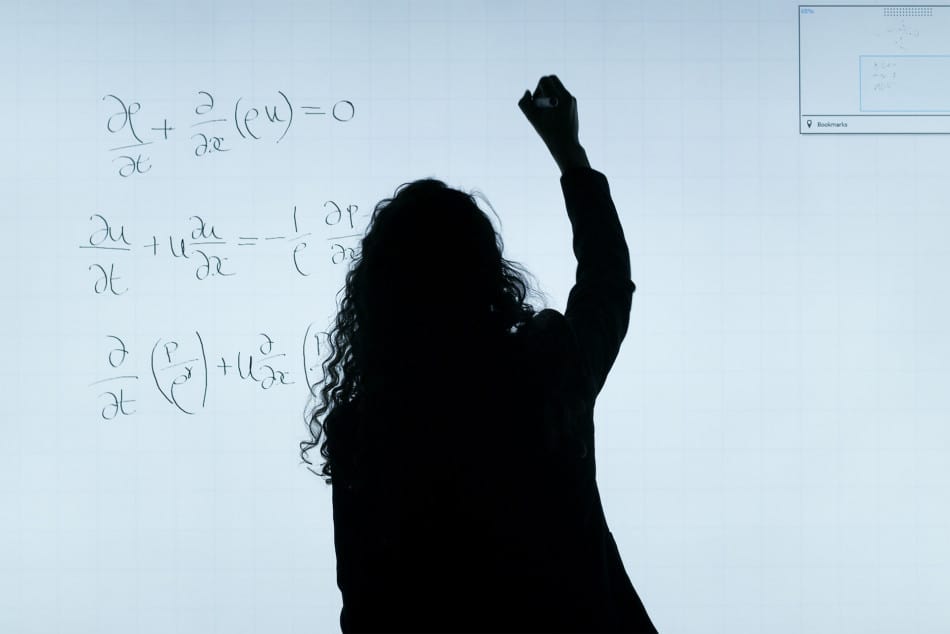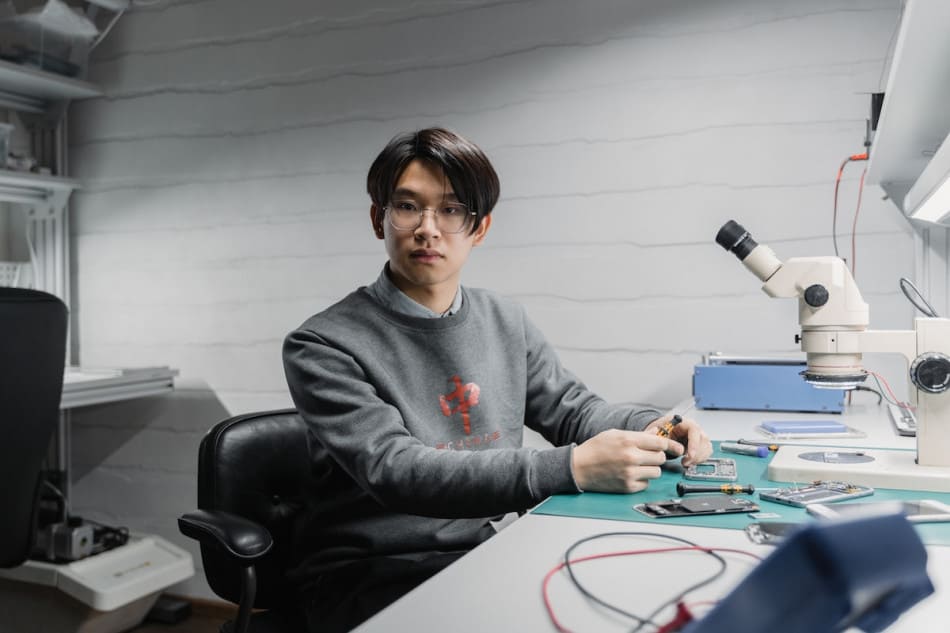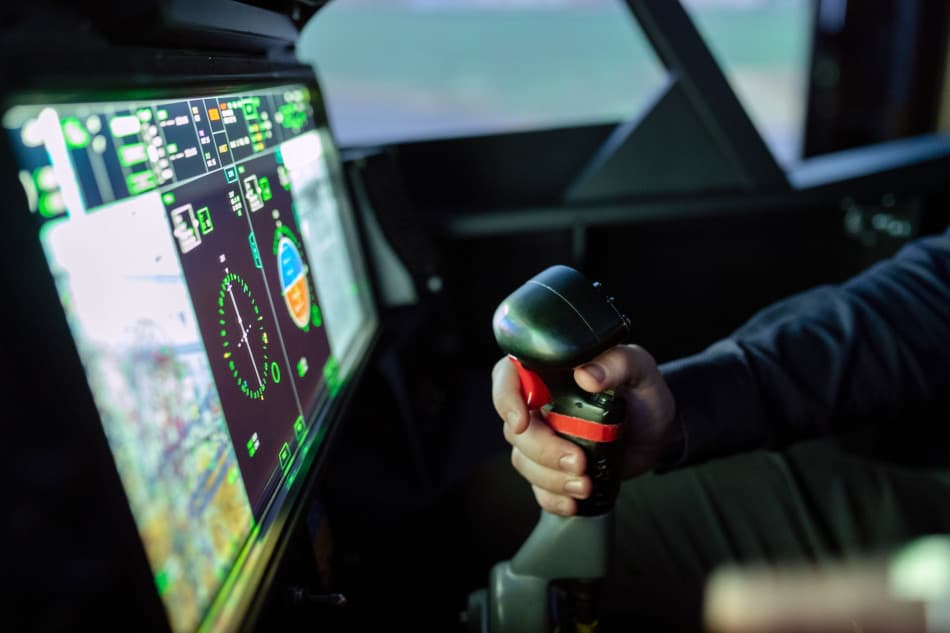With greater diversity and complexity of information available online, it is possible to obtain technical research papers on Google Scholar and the most detailed technical explanations on diverse topics such as Aerospace Engineering.
Before studying the highly technical and complex field of Aerospace Engineering, read the following points you should consider and the nine steps you need to take to master this field.
- Know what you want to gain from your Aerospace know-how
- How Elon Musk learned Rocket Science
- The mathematics needed to work on Aerospace problems
- Physics for Aerospace Engineers
- Chemistry required to work on Aerospace propulsion
- Avionics and Mechatronics for Aerospace Engineers
- Programming and Coding in Aerospace
- Skills professional Aerospace Engineers need
- Join amateur Aero and Rocket clubs
Know What You Want To Gain From Your Aerospace Know-How
If your goal is to get a job with a large aerospace firm such as NASA, Lockheed Martin, and Northrop Grumman as a self-taught engineer with no formal training, degree, or certification, then prepare to be disappointed.
The modern engineering job market is so competitive that even degreed and experienced engineers struggle to find the jobs they want.
In the days of the Wright Brothers, when Aeronautics was still a young science, planes were built and flown by autodidacts. The early pioneers learned by trial and error and often died in their attempts.
As many lessons were learned the hard way, aeronautics matured through accumulating this hard-won knowledge. The science matured by progressively becoming more standardized.
In the interests of safety and profitability, Aerospace companies hire only engineers who can be trusted to work according to the best practice of the day.

Engineers can only prove they can deliver on the required best practice by completing a recognized certification process such as obtaining a degree.
Suppose you are already working in Aerospace as an experienced and respected technician, continuously working with and talking to engineers. In that case, upgrading your knowledge to an engineering standard may be easier.
Being surrounded by engineers and observing how they work gives you a realistic sense of what is expected and uncovers your knowledge gaps.
The problem with studying material on your own is that you do not always have the chance to test your understanding in the real world. Being on your own makes it difficult to bounce your ideas off experts who can give you immediate feedback.
Students studying through a university have access to needed resources such as wind tunnels and the opportunity to go on factory field trips.
The danger of being an isolated autodidact is that you may lapse into a private language not shared by the standard aerospace community and not even be aware of not knowing what you don’t know, which can be very dangerous if lives are at stake.
Students who don’t know what they don’t know need assistance and guidance.
Suppose your goal is to learn Aerospace Engineering as a hobby, to be a well-informed amateur, and to be more productive in your local flying or rocket club.
In that case, that is more realistic and doable. Joining a gliding or paragliding club is a relatively cheap way to learn to fly while obtaining a practical understanding of basic aerodynamics.
You may find flying clubs with members assembling microlite airplane kits. One can learn a lot from these DIY hobbyists. If you are interested in rockets, joining an amateur rocket society may be a good idea.
-> Read Also What Is An Autodidact?
How Elon Musk Learnt Rocket Science.
Many people may be inspired by Elon Musk, who managed to create Space X without a formal Aerospace Engineering degree.
Although one may call Musk an autodidact, in the sense that he learned rocket science from books rather than taking formal university courses, he was not an isolated learner.
He profited from surrounding himself with experts and from real-world feedback.

His approach to learning rocket science consisted of the following 2 basic steps:
Set A Goal To Focus Your Aerospace Study
Elon begins projects by defining a goal and putting a lot of work into understanding what that goal entails and why it is valid.
Once his goal is set, he learns as much about his chosen project topic as possible from as many sources as possible.
Musk set himself the goal of enabling mankind to become an interplanetary specie. To this aim, he became a member of the Mars Society, where he found like-minded people to discuss ways to fund plans to put a greenhouse filled with seeds and nutrient gel onto the Martian surface to establish a life there.
He figured that US rocket companies charged too much for lunching services and thought he could do this most cheaply with a refurbished Russian Dnepr missile.
After making 3 trips to Russia, the deal fell through. In the face of this failure, Musk retreated back to first principles.
He asked himself why rockets were so expensive. He figured that at the bare minimum, rockets, at the very least, must cost as much as the total of their material inputs.
He added up the cost of all the materials that go into a rocket. He found that it was a tiny fraction of the final cost paid by commercial rocket builders.
Rocket building costs were high because builders relied on a long chain of subcontractors that charged their own mark-up, inflating the total final cost. He founded Space X to reduce launch costs.
By owning a company that built the whole rocket in-house, he could cut out the middle man and be free to source components and materials from the cheapest suppliers.
Musk learned Aerospace Engineering by setting himself practical tasks, clarifying what he needed and did not need to know.
He surrounded himself with relevantly qualified people from whom he could continuously learn. It also didn’t hurt that he had $100 million available for this purpose.
As an amateur Aerospace Engineer, you could follow Musk’s example in a far more modest way. Instead of trying to master Aerospace Engineering in general, set yourself a concrete task.
For instance, Challenge yourself to build a rocket from scratch without buying a kit that can fly to a 1500ft altitude.
Learn the basics by joining an amateur rocket society and master all theory, practical skills, and know-how needed for this goal.
To see how a rocket amateur recreated Musk’s landing rockets on a smaller scale, click on the following video link.
Construct Your Aerospace Study Around Mental Semantic Trees
Musk approached problems from first principles. Be clear on what you want to do and what is required to do it. He compared knowledge to a tree.
Obtain a solid foundational knowledge of the problem (Tree trunk) and learn only the relevant subdisciplines(branches), special facts, and details (leaves) that logically connect to the trunk.
Being both a Physics and an Economics major, Musk reduced all the aerospace problems faced by his company to their most fundamental physical and economic principles (Tree trunk) and understood all the details of Space X operations in terms of them.
If one was to apply this idea to, let’s say, an amateur rocket enthusiast, she should not randomly lose herself in the vast literature on liquid and solid propellants and rocket material science.
She should first set a clear and limited goal: Fly a 5kg rocket to a 1500ft altitude.
The tree trunk, in this case, is the Fundamental Rocket Equation, which should inform all chosen materials and propellants, not the other way round.
Read All Relevant Aerospace Literature
Esquire interviewed space X co-founder Jim Cantrell in 2012, where he spoke about Musk’s passion for reading rocket science books.
He mentioned the following books he lent to Musk:
- Rocket Propulsion Elements by George P. Sutton, Oscar Biblarz
- Fundamentals of Astrodynamics by Roger R. Bate, Donald D. Mueller, Jerry E. White
- Elements of Propulsion: Gas Turbines and Rockets by J. Mattingly, H. von Ohain
Musk recommends reading books rather than only watching YouTube videos, reading informal comments, or talking to experts because a lot of effort and time goes into writing them.
For books to get published, they must undergo rigorous vetting procedures, where most errors are caught and rectified.
Remember that learning about aerospace engineering is easier than learning to be an aerospace engineer. To learn about aerospace engineering, visit a university website and download a list of Aerospace courses.
This will give you a structured outline of what you need to study. Next, get used textbooks off Amazon and read them.

Aerospace engineering is a vast and diverse field concerned with the manufacturing, testing, designing, and deploying spacecraft, aircraft, satellites, and missiles. Below is a list of 6 good books you can pick up on Amazon at reasonable prices:
- Orbital Mechanics for Engineering Students (Aerospace Engineering) 4th Edition—by Howard D. Curtis Ph.D. Purdue University
- Introduction to Aerospace Engineering with a Flight Test Perspective (Aerospace Series) 1st Edition—by Stephen Corda
- Aircraft Control and Simulation: Dynamics, Controls Design, and Autonomous Systems 3rd Edition—by Brian L. Stevens, Frank L. Lewis, Eric N. Johnson
- Aircraft Structures (Dover Books on Aeronautical Engineering)—by David J. Peery
- Missile Design and System Engineering (AIAA Education)—by Eugene L. Fleeman
- Introduction to Aerospace Materials, 1st Edition—by Adrian P. Mouritz
- Space Mission Analysis and Design, 3rd Edition (Space Technology Library, Vol. 8): Wiley J. Larson, James R. Wertz: 9781881883104: Amazon.com: Books)
Don’t read these books in random order. Refer to the structured syllabus and course outlines of university Aerospace courses.
If you study these carefully, you will see that: In the first 2 years, students study basic foundational courses like physics and calculus. There are no specific aerospace classes until the 3rd year.
Aerospace Engineering is mostly an application of mechanics, so students should obtain a solid mechanical engineering background first. For this; study:
- Calculus and linear algebra
- Thermodynamics
- Material selection
- Statics and dynamics
- Fluid mechanics
- Fracture mechanics
- Vibrational analysis
The actual Aerospace Engineering courses include the following: (prerequisites courses needed for studying them are in brackets)
- Aerodynamics (Fluid Mechanics)
- Aerospace Structures (Solid Mechanics)
- Flight Mechanics
- Aerospace Propulsion (Fluid Mechanics and Thermodynamics)
- Avionics
- Control systems
Also, you should study engineering disciplines that relate to the particular vehicle you are interested in, such as:
- Mechatronics – autopilot
- Chemical engineering – propellants
- Electrical engineering – electrical thrusters
- Optimization theory (e.g., making a sensible tradeoff between weight and thrust)
Try integrating all your studies with the actual plane, helicopter, and rocket designs. It is also advisable to use open online courses and MOOCs to sharpen your knowledge in Aerospace Engineering.
- Take Introduction to Aerodynamics and Flight Vehicle Aerodynamics offered by MIT on the edX platform for Aerodynamics.
- For Aerospace Propulsion, take Aerospace Engineering on NPTEL.
- Take Structural Mechanics and Techniques for Structural Analysis and Design for Aerospace Structures on MIT OCW.
- For Flight Mechanics, Flight Dynamics-I and Flight Dynamics-II are useful.
Click on the following video which outlines Musk’s learning process.
Mathematics Needed To Work On Aerospace Problems

Math is an underlying instrument for learning aeronautical engineering; it is used to check stresses and strains, determine fluid dynamics, and model shapes.
Aeronautical engineers use math in formulas; formulas can improve an aircraft’s speed and agility in flight.
The shape and size of a wing in comparison to its weight is an essential factor.
Geometry is used in missile defense; it calculates the bearing of large-caliber hazards as well as its speed.
Collision with a threatening object can therefore be avoided if the path of such an object is known.
Structural loads of missiles are calculated with math; it’s also used to determine the missile’s speed and distance.
Calculus is an important aspect of aeronautical engineering; analytical geometry uses the principles of calculus and trigonometry.
Limits, vectors, integrals, mean values, and derivatives are all resolved with analytical geometry. Differential equations are common; they model airflow around an aircraft.
Aerospace engineers have a solid foundation in fluid mechanics, which requires several semesters of calculus through differential equations.
Advanced math such as dimensional analysis and Fourier and Laplace transforms will also need to be mastered.
Physics For Aerospace Engineers
Applications of physics in aeronautical engineering include aeronautics, which is all about structures, the structures of a rocket or an aircraft, flight dynamics, aerodynamics, propulsion, and space dynamics.
Aerodynamics relates to drag and lift, and the Bernoulli principle enables an aircraft to fly.
Propulsion involves using Newton’s third law; all actions equal reactions.
This law states that all forces between two objects exist in equal magnitude and opposite direction: if one thing exerts a force on a second thing, and said object exerts a force on the first object, in addition, the two forces are equal in magnitude and opposite in direction.

-> Learn More about How To Self-Learn Physics: The Ultimate Guide
Chemistry Needed To Work On Aerospace Propulsion.
Chemistry is needed to understand how to make rocket fuel and how it burns. Understanding different fuels and their properties is an important component of aeronautical engineering.
Rockets react with an oxidizer, and the exhaust gas kinetic energy extracts the stored energy.
Understanding pure elements, alloys, and composite materials to design rockets that are light but strong in the structure is important in the construction of efficient rockets.
The combustion process for propulsion is understood by learning chemistry.
-> Learn More about Is Chemistry Hard To Learn? + How To Make It Easier
Avionics For Aerospace Engineers
The term combines the words aviation and electronics. It refers to the electronics used in aircraft, satellites, and spacecraft guidance, control, navigation, and communication systems.
These systems include displaying and managing multiple systems and implementing Artificial Intelligence and software-based controls for autonomous systems.
These systems may be as simple as a searchlight for a patrolling helicopter to complex ones, like a fully functional tactical system for an airborne early warning platform integrated with a ground control center for the live relay of information.
Programming And Coding In Aerospace
Although not strictly a requirement of aeronautical engineering, coding skills are becoming more of a necessity than ever before.
Learning how to structure algorithms is a particularly good skill to master. In aerodynamics or structures, which require a lot of computations, for example, some programming skills are very useful.
Python is a widely used coding languages, MATLAB, which is like Fortran, is, however, often favored for doing computations amongst aeronautical engineers.
Fortran is often used for analyzing flight data and developing models and simulations. The basic of coding is a requirement for working as a mechanical engineer.
Python is new compared to other languages used in the aerospace engineering environment; it is open-source, has a syntax that is relatively easy to learn, has concise code, and is often used as a data analysis tool in many other industries.

-> Read Our Guide of How Can You Learn Python On Your Own?
Skills Professional Aerospace Engineers Need
Besides specific content knowledge that you can learn by reading books, you will need to learn a skill that may not be directly taught in an aerospace curriculum, such as:
- Being able to reason from first principles comes from scientific training, reasoning, and experience with hypothesis testing and applying the scientific method.
- Develop a good Intuition that can only be acquired from the experience of working on many projects
- Acquire Mental Frameworks you can use to view designed craft holistically and check for emergent phenomena.
- Practicality and Business Sense enables you to deliver cost-effective solutions that are possible and technically doable and don’t just work in theory.
- Analytical skills. Aerospace engineers need to identify design features that don’t meet requirements and must then be able to formulate functional alternatives.
- Business skills. Aerospace engineering designs must meet federal government standards. Meeting these standards requires knowledge of business practices and commercial law, and project management.
- Critical-thinking skills. Aerospace engineers must be able to figure out why a particular design does not work and then able to ask the right question, then find an acceptable solution.
- Problem-solving skills. Aerospace engineers use their knowledge and experience to improve designs and troubleshoot problems when meeting new demands for increased fuel efficiency or improved safety.
- Writing skills. Aerospace engineers must be able to write papers that explain their designs clearly and create documentation for future reference.
-> Learn more about the 7 best websites for self-learning
Conclusion
You cannot teach yourself Aerospace Engineering and expect to work as a professional for Aerospace companies. To do so, you must follow a full accredited syllabus and obtain a bachelor of science degree from a recognized university.
However, there are many ways to familiarize yourself with Aerospace Engineering principles by reading good books, watching YouTube videos, and joining flying and rocket clubs.






